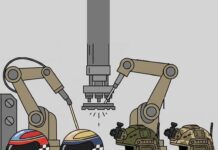The era of CRISPR and modern gene therapy methods has presented states with a unique challenge: where is the line between scientific progress and ethical standards? Some countries are taking an extremely cautious approach, while others are betting on flexibility and innovation.
Let’s look at three examples: the United States, Singapore and China. How exactly they are building their rules?
U.S.: Cautious regulation via FDA and NIH
In the United States, the system for regulating gene technology relies on well-established structures.
- Somatic therapies (changes to body cells that are not hereditary) are permitted, but only in tightly controlled clinical trials. This is the responsibility of the FDA, which approves research protocols and monitors safety.
- Germ editing (embryos, sex cells) is not formally prohibited by law, but government funding for such projects is excluded. The NIH (National Institutes of Health) directly prohibits the allocation of grants for research involving embryo editing.
Therefore the U.S. has a rigid system: somatics in a grey area, but with little to no funding and prospects for practical application.
Singapore: Flexibility with Strict Ethics
Singapore has built a more innovation-friendly regime yet controlled.
There is no single “CRISPR law” regulation is based on several acts: the Human Biomedical Research Act (2015), the Health Products Act (2007), and the Healthcare Services Act (2020).
Experiments with embryos up to 14 days old are permitted, provided that they are “redundant” after IVF. Each study must undergo strict review by ethical committees.
Genetic editing for therapy is not yet allowed. Singapore follows the principle of caution: first safety followed by ethics, then application.
Singapore's unique feature is that it sees gene therapy as a potential biomedical industry, but it strictly regulates the risk-benefit ratio.
China: Scandal to Tightening
China is the country with the most dramatic history in this area.
In 2018, scientist He Jiankui announced the birth of the world’s first children with an edited genome (for resistance to HIV). This step caused a global scandal and condemnation from the scientific community.
After that, the authorities introduced the following tough measures:
- Civil and criminal law was amended, where genes and embryos are recognised as protected “personal rights”.
- Any experiments with editing embryos are now prohibited for reproductive purposes.
- Violation is punishable by up to 7 years in prison.
The irony is that China went from being the “freest” to being the “strictest” in order to restore its reputation.
Who Sets the Boundaries?
The question of “who sets the rules” turns out to be more of a value question than a scientific one.
- The U.S. is focusing on security and public trust, while leaving room for private initiatives.
- Singapore is building a model of “responsible innovative growth,” where ethics is built into the system itself.
- China, having been burned by the scandal, is betting on strict prohibitions and control to restore trust in its science.
The international community is increasingly discussing the need for global norms, under the auspices of the WHO, because technology knows no borders.
Gene editing has revolutionary potential, but national laws decides the speed and direction of implementation.
Economy and Bioindustry: CRISPR as a Driver of the Global Market
CRISPR technology is not only revolutionising medicine, but is also becoming a key element of the biotech economy.
The global gene editing market was valued at $9.78 billion in 2024 and is projected to grow to $25 billion by 2030, with a compound annual growth rate (CAGR) of 16.1%.
In China, the CRISPR gene editing market was $299.8 million in 2024 and is expected to reach $925.8 million by 2030, corresponding to a CAGR of 20.7%.
Singapore, with its highly developed research institutions and support for innovation, is also actively developing the biotech sector, viewing CRISPR as a strategic asset for future growth.
While borders define states, the true answer to the question of “who makes the rules” lies at the intersection of science, ethics, and society where the fate of future generations is decided.
Read the Latest Articles on DET!
Relations in the Rear View For Now: The U.S.-India Diplomatic Crisis
A New Wave of Bioethics: The Frontiers of Genetic Engineering
Social Capital Lives On: The Story of Germany and Russia





